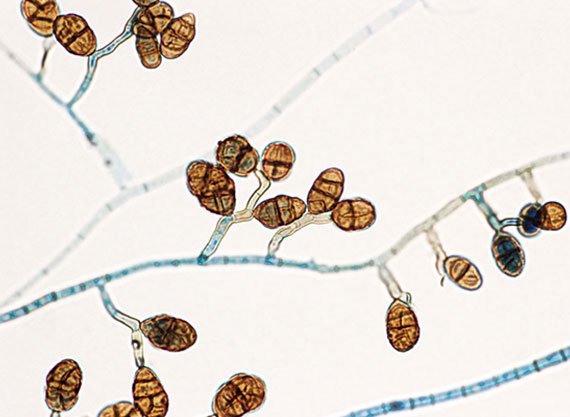
Ulocladium Chartarum
Growth in Indoor Environment
Ulocladium sp. has been found indoors on water-damaged building materials. It has also been isolated from paper, textiles fibres, house dust, mattress dust and in domestic air conditioners.
Under humid indoor conditions, Ulocladium has been found on painted surfaces, tapestry and on water-damaged building materials.
Nevertheless, the fact that Ulocladium can produce strong toxic endometabolites when grown on synthetic medium may mean that it could contribute to poor indoor air quality and health problems.
Tyical Areas Found
Gypsum, paper, paint, and straw materials; requires a large source of water.
Growth Requirements
Species of Ulocladium grow at temperatures ranging from 5 to 34 °C. Indoors, Ulocladium sp. is considered a tertiary coloniser and an indicator of indoor moisture problems; in fact, it requires a high water environment to germinate and grow, although it can survive the stress of short drier periods.
Ulocladium appears to be able to grow at lower humidity levels if maintained at these levels over time; growth has been observed on wallpaper in an environment exhibiting a relatively constant relative humidity above 75%.
Identification
Grows moderately rapid; texture is wooly/cottony. Pigment is olive brown/black on surface and reverse. Hyphae are septate, brown; conidiophores are brown with knee-like bends. Conidia (poroconidia) are brown, muriform, obvoid/ellipsoidal, smooth or rough walls, usually singly.

Ulocladium Chartarum
Mycotoxins Produced
None identified at this time.
Ulocladium spp. produce certain toxic substances that are biologically active against other fungi and plant cells.
Health Effects
Allergenic effects generally displayed in the form of Type I allergies; has been implicated in phaeohyphomycosis (fungal infection caused by a number of brown-pigmented fungi) and in rare subcutaneous tissue infections.
Also see:


